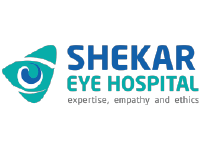Are you aware of how sunlight can affect your eyes? It is a well-known fact that we all require our daily dose of sunshine to maintain a healthy lifestyle. The precursor forms of vitamin D present in the skin require sunlight to get activated and further maintain a calcium balance in the body. But not all components of sunlight are beneficial to us, and some are even harmful.
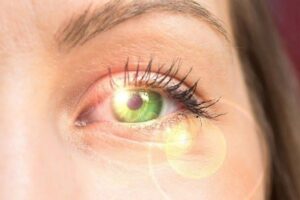
What are ultraviolet rays?
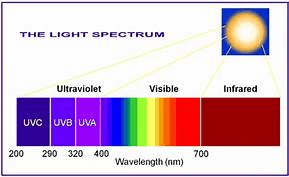
The electromagnetic spectrum ranges from gamma rays to radio waves. Ultraviolet radiation is invisible to human perception. With decreasing wavelength spectral energy raises the potential for ocular damage. UV rays are a part of the spectrum of light which are of 3 types based on the wavelength.
The electromagnetic spectrum ranges from gamma rays to radio waves. Ultraviolet radiation is invisible to human perception. With decreasing wavelength spectral energy raises the potential for ocular damage. UV rays are a part of the spectrum of light which are of 3 types based on the wavelength.
UV-C (200-280 nm) rays which are of the shortest wavelength don’t enter the earth as they are completely absorbed by the ozone layer. But lately, due to the depleting ozone layer, these rays have the capacity to cause the most amount of damage to the human body of all types.
UV-B(280-315nm) rays are only partially absorbed by the ozone layer and the rest of it reaches the eye.
UV-A(315-400nm) having the longest wavelength amongst the 3 completely enter the earth’s atmosphere.
Harmful ultraviolet radiation can also be emitted by lasers, mercury vapour lamps, and welding equipment.
What is high-energy visible light?
“Blue light” emitted from screens of laptops, tablets, and phones has become extremely popular and well-known in today’s world due to the increasing use of such devices either for work or online classes.
There are numerous articles on the effects of blue light. So, it becomes imperative to know what it is and whether it is actually harmful to us.
HEV light (blue light) is the light in the visible spectrum with a wavelength between 430-490nm. These are the rays which are not absorbed by any structure in the eye and directly reach the retina. Theoretically and in many animal studies blue light has been known to cause damage to various parts of the eye like oxidative damage in the corneal epithelium, hence causing dry eye-related problems, early and accelerated damage to lenticular cells causing cataract and reactive oxygen species-related damage to retinal cells as well, causing visual impairment.
An important fact to be considered about HEV is that sunlight is the most important source of blue light and is produced in much larger amounts than that which is emitted by digital devices. And hence, the above-mentioned diseases caused by blue light from devices are most definitely a myth and are hyped. Other important sources of blue light include LED bulbs and fluorescent lighting.
Blue light, however, is also scattered more compared to red light in the visible spectrum and hence comes to focus in front of the retina and in order to view this light clearly, more accommodation is needed by eye and hence gives rise to eye-strain.
It has also been found to play a very major role in controlling the circadian rhythm of the body, which is basically the clock in your body, keeping you awake during the day and helping you sleep at night. It is also required for cognitive development and alertness. So, using devices at night has been found to cause insomnia.
UV rays and the eye
For starters, it is important to understand that different layers of your eye absorb different wavelengths of UV rays. Most of the UVB rays are absorbed by the skin, cornea and crystalline lens. UVA, being longer, reaches the retina and macula.
Image courtesy: world wide web
What diseases do they cause?
- Periocular skin and eyelid cancers
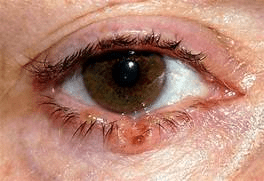
Basal cell carcinoma of the eyelid
Image courtesy: world wide web
Basal cell carcinoma, squamous cell carcinoma and melanomas are more common in individuals with a lot of sun exposure.
- Pterygium and pinguecula
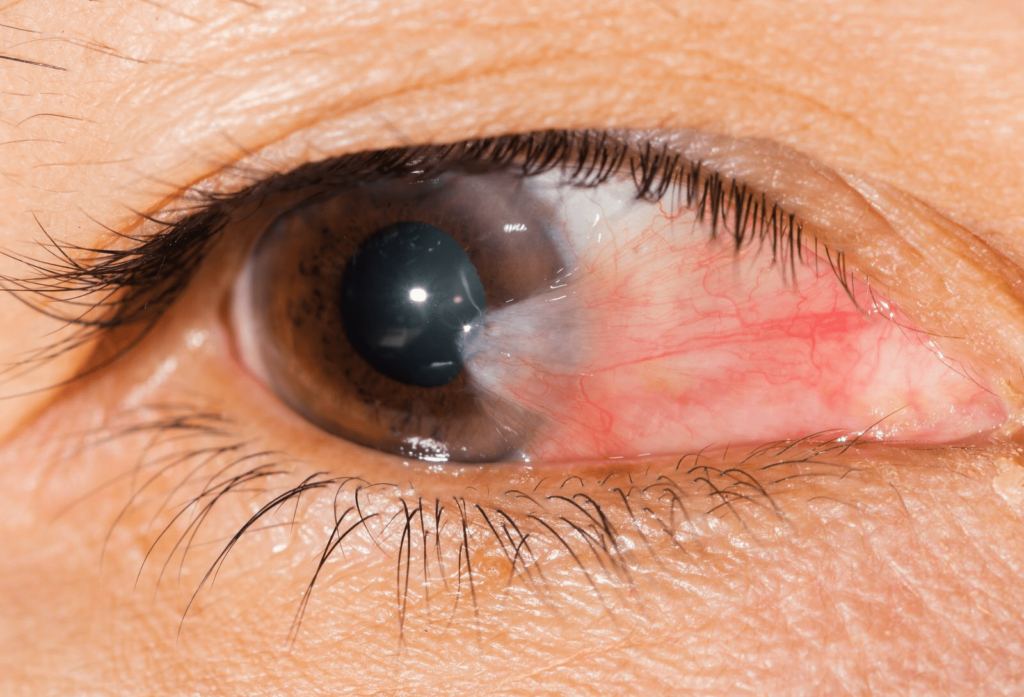
Image courtesy: world wide web
Pterygium is a triangular or wedge-shaped growth of the conjunctiva that extends onto the surface of the cornea. This can cause a variety of problems like irritation, and distortion of vision and if very progressive can also leave an unsightly scar and permanent visual damage even after it is removed.
- Cataract

Image courtesy: world wide web
It is the clouding of the normally clear lens inside your eye. The development is generally age-related but excessive exposure to sunlight can speed up this process. UVB rays are responsible for this.
- Age-related macular degeneration
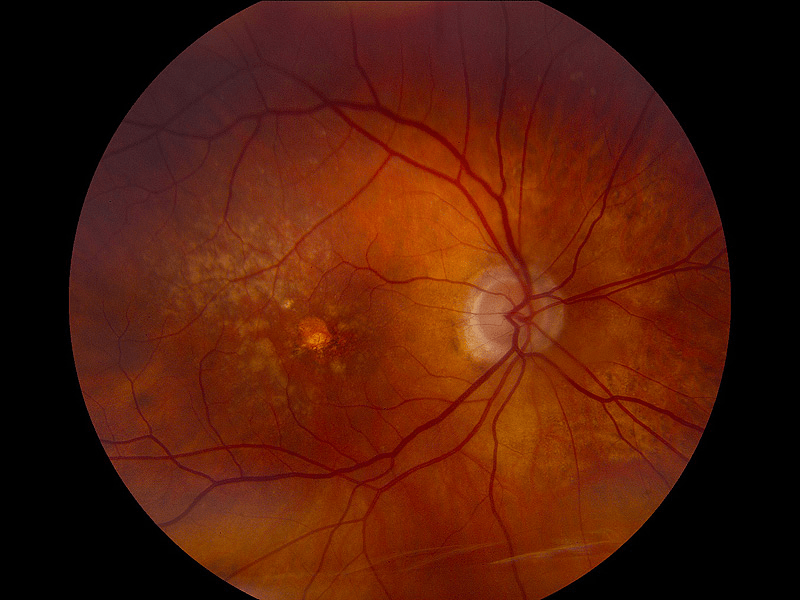
Image courtesy: world wide web
This is one of the main causes of the painless, progressive diminution of vision in the Western world but is also catching up in India. The end result can be permanent vision impairment and hence needs to be screened regularly.
- Snow blindness – it is a form of photokeratitis, is a painful eye condition caused by acute exposure to ultraviolet (UV) rays reflected from ice and snow, particularly at high elevations. Therefore, it is important to wear protective eyewear even in cold climates. Most of them also include polarised glasses with anti-UV coating which reduces the glare as well.
A similar presentation with pain, redness, burning, and temporary loss of vision also occurs in a flash burn while using welding equipment and is called a welder’s flash or arc eye.
- Uveal melanoma – It is the most common intra-ocular cancer in adults. Though it is almost exclusively common in Caucasians, fair skin, light eye colour and UV exposure are the common risk factors.
Who is at risk?
- People who work outdoors, under the sun, for prolonged time periods.
- People living in high altitudes, as the atmosphere is thinner, and hence, more exposure
- In tropical countries like India, the amount of sunlight received is quite high throughout the year.
- Fair-skinned individuals.
- People using tanning beds
Protect eyes from UV rays
- Avoid unnecessary and prolonged exposure, especially in the afternoon. WHO recommends 10-15 mins of sun exposure preferably early in the morning when the intensity isn’t very high.
- Wide-brimmed hats.
- They play a very important role in protecting eyes in addition to being used as a style statement. While choosing sunglasses one should make sure that they specifically ask for 100% UV-blocking glasses or UV400 glasses, which block rays up to 400nm.
- Shade or clouds do not mean that we are protected from harmful rays as they can be reflected off smooth surfaces like buildings and pavements and still cause damage.
- UV-blocking contact lenses are also available these days.
- Since the crystalline lens absorbs most of the UV rays, removal of the lens during cataract surgery should be replaced by an intra-ocular lens that has an anti-UV coating.
- Regular eye check-ups with your Ophthalmologist can also help in screening and treating these diseases at an early stage.
UV in treating eye diseases
UVA rays also have some therapeutic properties i.e. collagen cross-linking. It is used in flattening the curve and stopping the progression of keratoconus by strengthening covalent bonds in corneal collagen, thus improving vision to a certain extent. Of late, it has been used to treat resistant bacterial keratitis.
For those undergoing this procedure the obvious question would be – wouldn’t the UVA rays affect the endothelium, lens or retina?
Well, the answer to this lies in the fact that conventional cross-linking procedures are done only when the thickness of the cornea is a minimum of 400 micrometres. The iso-osmolar 0.1% riboflavin in 20% dextran used in this procedure also acts to concentrate the UVA (370 nm) rays to the anterior 300 micrometres of the de-epithelioid cornea. Studies have shown that if this conventional therapy is done in thin corneas it can lead to endothelial cell loss.
To conclude, just like our skin needs UV-blocking sunscreens, our eyes also need protection in the form of appropriate sunglasses, and hats. Anything in extremes is harmful- including sunlight and digital devices. It is always recommended to undergo regular eye checkups with your care provider to diagnose diseases at the earliest.



